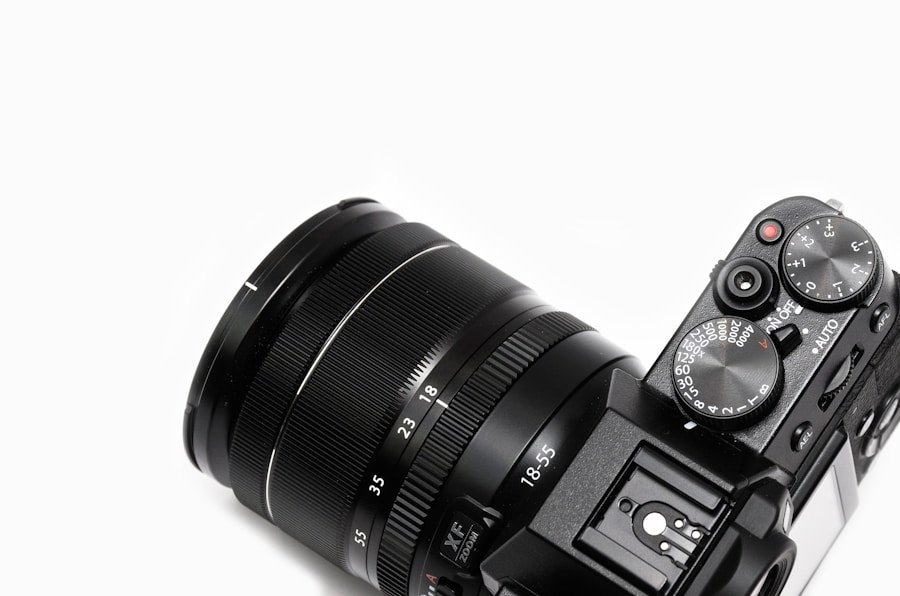When it comes to selecting the perfect insect repellent for camping, it’s important to understand the different types available on the market. There are several options to choose from, including sprays, lotions, wipes, and even wearable devices. Each type of repellent has its own unique benefits and drawbacks, so it’s essential to consider your specific needs and preferences when making a decision.
Sprays are one of the most popular types of insect repellents, as they are easy to apply and provide thorough coverage. Lotions, on the other hand, are often preferred for their moisturizing properties and longer-lasting protection. Wipes are convenient for on-the-go application, while wearable devices offer a hands-free approach to insect protection.
By understanding the different types of insect repellents available, you can make an informed decision that best suits your camping needs. In addition to the various types of insect repellents, it’s also important to consider the active ingredients used in each product. Common active ingredients in insect repellents include DEET, picaridin, and oil of lemon eucalyptus.
Each of these ingredients has its own unique properties and effectiveness against different types of insects. By understanding the active ingredients in insect repellents, you can choose a product that will provide the best protection for your camping trip.
Key Takeaways
- Understanding the different types of insect repellents is crucial for selecting the perfect one for camping.
- Factors to consider when choosing an insect repellent for camping include the active ingredients, duration of protection, and application method.
- Natural and chemical insect repellents have their own pros and cons, so it’s important to weigh them before making a decision.
- Applying insect repellent effectively involves covering exposed skin, reapplying as needed, and avoiding contact with eyes and mouth.
- When choosing an insect repellent, consider the duration of protection needed and whether long-lasting or short-term protection is more suitable for your camping trip.
Factors to Consider When Choosing an Insect Repellent for Camping
When selecting an insect repellent for camping, there are several factors to consider to ensure you choose the perfect product for your needs. One important factor to consider is the duration of protection provided by the repellent. Some products offer long-lasting protection for several hours, while others provide shorter-term coverage and may need to be reapplied more frequently.
Consider the length of time you will be spending outdoors and choose a repellent that will provide adequate protection for your camping activities. Another important factor to consider is the effectiveness of the repellent against different types of insects. Some products may be more effective at repelling mosquitoes, while others may be better suited for warding off ticks or other biting insects.
Consider the specific insects you are likely to encounter in your camping area and choose a repellent that will provide comprehensive protection against those pests. It’s also important to consider any potential sensitivities or allergies you or your camping companions may have to certain ingredients in insect repellents. Some people may have adverse reactions to certain active ingredients, so it’s important to carefully read the product labels and choose a repellent that is safe for everyone in your camping group.
By considering these factors when choosing an insect repellent for camping, you can ensure that you select a product that will provide effective and safe protection against pesky insects.
One of the key decisions to make when choosing an insect repellent for camping is whether to opt for a natural or chemical-based product. Natural insect repellents often contain ingredients such as citronella, lemongrass, or peppermint oil, which are derived from plants and are considered safer for the environment. These products are often preferred by those who are looking for a more eco-friendly option or who have sensitivities to chemical-based repellents.
On the other hand, chemical-based insect repellents typically contain active ingredients such as DEET or picaridin, which have been proven to be highly effective at repelling a wide range of insects. These products are often preferred for their long-lasting protection and ability to ward off a variety of pests. While some people may have concerns about using chemical-based repellents, they have been extensively tested and approved for safe use by regulatory agencies such as the Environmental Protection Agency (EPA).
When deciding between natural and chemical insect repellents, it’s important to weigh the pros and cons of each type of product. Natural repellents may be gentler on the skin and better for the environment, but they may not provide as long-lasting or comprehensive protection as chemical-based products. Chemical-based repellents, on the other hand, may offer more effective and longer-lasting protection but may also come with potential concerns about exposure to certain ingredients.
By carefully considering the pros and cons of natural and chemical insect repellents, you can make an informed decision that aligns with your camping needs and personal preferences.
Tips for Applying Insect Repellent Effectively
Once you’ve selected the perfect insect repellent for your camping trip, it’s important to apply it effectively to ensure maximum protection against pesky insects. One important tip for applying insect repellent is to thoroughly read and follow the product label instructions. Different products may have specific application guidelines, such as how often to reapply or how much product to use per application.
By following these instructions carefully, you can ensure that you are getting the most out of your chosen repellent. Another important tip for applying insect repellent effectively is to cover all exposed skin thoroughly. This includes areas such as arms, legs, neck, and ankles, which are common targets for insect bites.
It’s also important to apply repellent to clothing, as some insects may be able to bite through thin fabrics. By ensuring that all exposed skin and clothing is adequately covered with repellent, you can minimize the risk of insect bites during your camping trip. It’s also important to be mindful of any potential interactions between sunscreen and insect repellent when spending time outdoors.
In general, it’s recommended to apply sunscreen first and allow it to fully absorb into the skin before applying insect repellent on top. Some products may also offer combination sunscreen and insect repellent formulas, which can be convenient for outdoor activities. By following these tips for applying insect repellent effectively, you can maximize its protective benefits and enjoy a bite-free camping experience.
When choosing an insect repellent for camping, it’s important to consider whether you need long-lasting or short-term protection against pesky insects. Some products offer extended protection for several hours, while others may need to be reapplied more frequently throughout the day. Consider the duration of your outdoor activities and choose a repellent that will provide adequate coverage for your needs.
Long-lasting insect repellents are often preferred for extended outdoor activities such as hiking or fishing, as they provide continuous protection without the need for frequent reapplication. These products typically contain higher concentrations of active ingredients and are designed to withstand sweat and water exposure. Short-term repellents, on the other hand, may be more suitable for brief outdoor excursions or activities where frequent reapplication is feasible.
It’s also important to consider any specific environmental factors that may affect the duration of protection provided by an insect repellent. For example, high temperatures or humidity levels may cause some products to evaporate more quickly from the skin, reducing their effectiveness over time. By considering these factors when choosing an insect repellent for camping, you can select a product that will provide reliable and long-lasting protection against pesky insects during your outdoor adventures.
Special Considerations for Children and Pets When Choosing Insect Repellent
| Insect Repellent | Active Ingredient | Protection Time | DEET Percentage |
|---|---|---|---|
| Repellent A | Picaridin | Up to 8 hours | N/A |
| Repellent B | DEET | Up to 10 hours | 25% |
| Repellent C | Oil of Lemon Eucalyptus | Up to 6 hours | N/A |
When selecting an insect repellent for camping with children or pets, it’s important to take special considerations into account to ensure their safety and well-being. Children’s skin is often more sensitive than adults’, so it’s important to choose a repellent that is specifically formulated for use on children. Look for products that are labeled as safe for use on children and follow any age restrictions or application guidelines provided by the manufacturer.
It’s also important to consider any potential risks associated with using certain active ingredients on children or pets. Some ingredients commonly found in insect repellents may not be suitable for use on young children or animals due to potential toxicity or adverse reactions. Always read product labels carefully and consult with a healthcare professional or veterinarian if you have any concerns about using a particular product on children or pets.
In addition to choosing a safe and effective insect repellent for children and pets, it’s also important to take additional measures to protect them from pesky insects while camping. This may include using mosquito nets or screens around sleeping areas, dressing them in long-sleeved clothing and pants, and avoiding outdoor activities during peak mosquito activity times. By taking these special considerations into account when choosing an insect repellent for camping with children and pets, you can ensure their safety and comfort during outdoor adventures.
Alternative Methods for Repelling Insects While Camping
In addition to using traditional insect repellents, there are several alternative methods for repelling insects while camping that can provide additional protection against pesky pests. One popular alternative method is using citronella candles or torches, which emit a scent that is known to repel mosquitoes and other biting insects. These can be placed around outdoor seating areas or near camping equipment to create a barrier against unwanted pests.
Another alternative method for repelling insects while camping is using essential oils such as lavender, eucalyptus, or tea tree oil. These oils can be applied directly to the skin or clothing or used in diffusers to create a natural barrier against insects. Some people also find that certain scents such as vanilla or peppermint can help deter mosquitoes and other biting insects when applied topically.
For those who prefer a hands-free approach to insect protection, wearable devices such as mosquito-repelling bracelets or clip-on devices are also available. These products emit a scent or ultrasonic sound that is designed to repel insects without the need for topical application of repellents. By considering these alternative methods for repelling insects while camping, you can enhance your overall protection against pesky pests and enjoy a more comfortable outdoor experience.
In conclusion, selecting the perfect insect repellent for camping involves understanding the different types of repellents available, considering various factors such as duration of protection and active ingredients, weighing the pros and cons of natural vs. chemical-based products, applying repellent effectively, choosing long-lasting vs. short-term protection, taking special considerations for children and pets into account, and exploring alternative methods for repelling insects.
By carefully considering these factors and tips when choosing an insect repellent for camping, you can ensure that you select a product that will provide effective protection against pesky pests during your outdoor adventures. With the right repellent in hand, you can say goodbye to mosquito bites and enjoy a more comfortable and enjoyable camping experience.
FAQs
What are the different types of insect repellents for camping?
There are several types of insect repellents for camping, including sprays, lotions, wipes, and wearable devices such as bracelets or clips.
What are the most effective active ingredients in insect repellents?
The most effective active ingredients in insect repellents are DEET, picaridin, and oil of lemon eucalyptus. These ingredients have been proven to provide long-lasting protection against mosquitoes and other biting insects.
How do I choose the right insect repellent for camping?
When choosing an insect repellent for camping, consider the length of time you will be outdoors, the types of insects in the area, and any potential skin sensitivities. Look for products with higher concentrations of active ingredients for longer-lasting protection.
Are there natural insect repellent options for camping?
Yes, there are natural insect repellent options for camping, such as products containing essential oils like citronella, lemongrass, or lavender. While these may provide some protection, they may not be as effective as products containing DEET or picaridin.
How should I apply insect repellent for camping?
When applying insect repellent for camping, follow the instructions on the product label. Apply the repellent to exposed skin and clothing, avoiding contact with eyes, mouth, and open wounds. Reapply as directed, especially after swimming or sweating.













